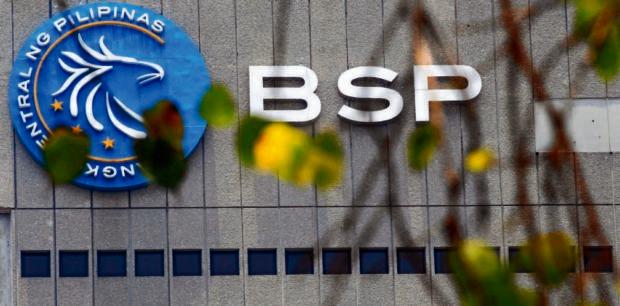BSP-approved government loans up 111% in 2018

Bangko Sentral ng Pilipinas. (File photo / Philippine Daily Inquirer)
MANILA, Philippines — Government loans from overseas approved by the Monetary Board more than doubled in 2018 as authorities ramped up efforts to fund the ambitious infrastructure buildup program of the Duterte administration.
In a statement, the Bangko Sentral ng Pilipinas (BSP) said its Monetary Board approved public sector loans in 2018 amounting to $7.355 billion, higher by $3.869 billion from the 2017 level of $3.486 billion, representing a 111% hike.
These public sector loans consisted of $3.602 billion in bonds; 12 project loans amounting to $2.853 billion; and three program loans amounting to $900 million.
“These public sector borrowings will fund projects on transport connectivity — roads, railways, port and airport infrastructure — irrigation and agriculture development, flood management, and the reconstruction and development of Marawi City,” the central bank said.
The Constitution mandates that prior approval of the central bank is required for all foreign loans to be contracted or guaranteed by the Republic of the Philippines.
Out of the $7.355 billion total approved public sector loans, about 18% of loans or $1,359.61 million will fund five infrastructure flagship projects under the “Build, Build, Build” program, which seeks to accelerate infrastructure spending and generate robust economic growth and employment.
While public sector loans increased year-on-year, the country’s external debt position remains at prudent levels, the BSP assured.
At end-March 2019, the Philippines’ outstanding external debt stood at $80.4 billion, up by $1.5 billion or 1.9% from the end-December 2018 level of $79.0 billion.
Despite the rise in external debt, the country’s debt service ratio has consistently remained at single-digit levels. This ratio stood at 5.1 percent as of end-March 2019, well below the international benchmark of 20% to 25%.
The debt service ratio relates principal and interest payments (the debt service burden) to exports of goods and receipts from services and primary income. It is a measure of the adequacy of the country’s foreign exchange earnings to meet maturing debt obligations.
Meanwhile, the country’s external debt ratio — a solvency indicator, or total outstanding debt expressed as a percentage of gross national income — slightly increased to 20% at end-March 2019 from 19.9% a quarter ago.
The ratio indicates the country’s sustained strong position to service foreign borrowings in the medium to long-term.
(Editor: Alexander T. Magno)
